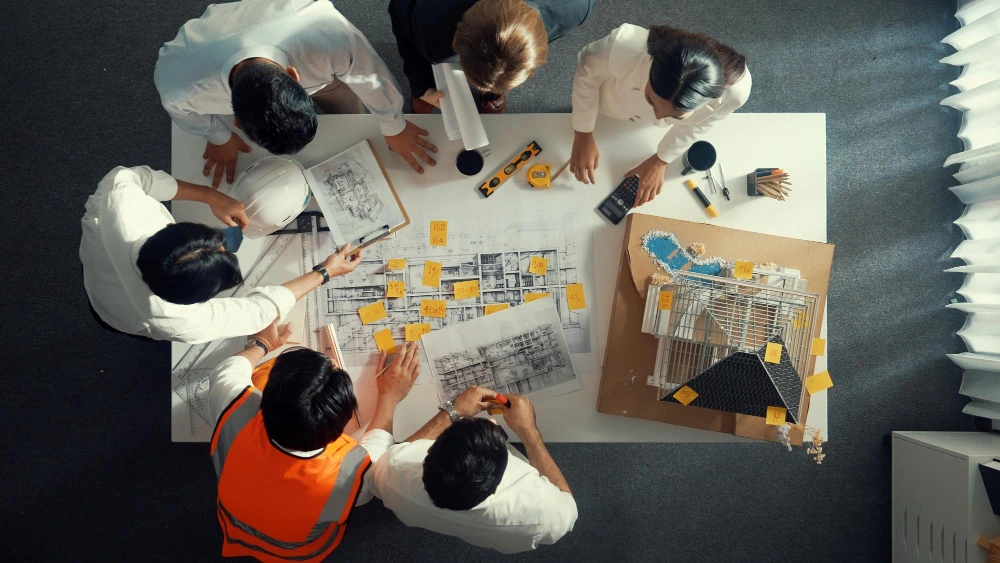The world of work is undergoing a seismic shift. Automation, technological advancements, and ever-evolving marketplace needs are making traditional skill sets obsolete at an alarming rate. In this dynamic environment, skill-based organizations that rely heavily on skilled workers must prioritize reskilling their workforce to stay ahead of the curve.
This blog delves into the importance of reskilling for skill-based organizations. We’ll explore the changing work landscape, differentiate between reskilling and upskilling, and highlight the benefits of a robust reskilling strategy. We’ll also provide practical tips on building a successful reskilling program that fosters a culture of continuous learning and keeps your workforce future-proof.
The Changing Landscape of Work: Why Skills Become Obsolete
The half-life of skills – the time it takes for a skill to lose half its value – is shrinking rapidly. A report by the World Economic Forum estimates that by 2025, half of all employees will need reskilling due to automation and technological disruption. This rapid change presents a significant challenge for skill-based organizations, whose success hinges on their employees’ expertise.
Several factors contribute to the obsolescence of skills:
- Technological Advancements: New technologies are constantly emerging, automating tasks previously performed by humans. This requires workers to develop new skill sets to stay relevant.
- Globalization: The rise of the global marketplace means businesses compete on a broader scale. Employees need to adapt to accommodate diverse cultural contexts and evolving market demands.
- Shifting Business Models: Business models are constantly evolving. This necessitates reskilling employees to adapt to new workflows, tools, and strategies.
These factors highlight the need for organizations to proactively invest in reskilling their workforce.
What is Reskilling?
Reskilling involves equipping your employees with entirely new skill sets to prepare them for different roles within the company or transition them to entirely new career paths. This could involve:
- Learning new software or tools: As technology advances, employees may need to learn new software programs or tools to perform their jobs effectively
- Developing new technical skills: Automation might necessitate reskilling employees in data analysis, critical thinking, or problem-solving.
- Acquiring new soft skills: The changing workplace demands strong communication, collaboration, and adaptability skills, requiring reskilling to develop these competencies.
Reskilling differs from upskilling, which focuses on building upon existing skill sets to enhance performance within a current role.
Upskilling vs. Reskilling: The Major Differences
While both reskilling and upskilling focus on employee development, they differ in their goals and applications:
- Focus: Upskilling focuses on enhancing existing skills while reskilling equips employees with entirely new skill sets
- Application: Upskilling is usually applied to improve current roles, while reskilling helps employees transition to new roles or adapt to significant changes within their current roles.
- Depth of Learning: Upskilling typically involves a shorter learning curve, focusing on specific skill development. Reskilling usually requires a more in-depth learning commitment.
Reskilling and upskilling can be complementary strategies. Organizations can implement upskilling programs to maintain a baseline of skills while concurrently investing in reskilling programs for long-term workforce sustainability.
The Benefits of Reskilling for Skill-Based Organizations
Reskilling offers a multitude of benefits for skill-based organizations, allowing them to thrive in a dynamic workplace:
- Adaptability and Innovation in a Changing Market: Reskilled employees are better equipped to adapt to new technologies, market trends, and evolving client needs. This agility allows organizations to remain competitive and innovative in the long run.
- Enhanced Employee Engagement and Retention: Investing in employee development through reskilling demonstrates the organization’s commitment to its workforce. This fosters a sense of loyalty and engagement, leading to higher employee retention rates.
- Cost-Effectiveness and ROI: Reskilling existing employees is often more cost-effective than hiring and onboarding new talent. Additionally, a reskilled workforce can deliver improved performance and productivity, leading to a higher return on investment (ROI).
Reskilling benefits the organization and empowers employees with valuable skills that enhance their employability across the job market.
Building a Successful Reskilling Strategy
Developing a successful reskilling strategy requires a proactive approach:
-
Identifying Skill Gaps and Future Needs
Conduct a thorough analysis to identify your organization’s current skill sets and compare them to the industry’s projected future needs. This gap analysis will highlight the areas where reskilling is crucial.
-
Tailored Learning Programs and Development Opportunities
Reskilling programs should be tailored to the organization’s and individual employees’ specific needs. This could include:
- Online courses and certification programs
- Mentorship programs with experienced colleagues
- Microlearning modules that offer focused learning on particular skills
- On-the-job training and job shadowing opportunities
Reskilling programs should be accessible and engaging to foster a positive learning environment.
-
Fostering a Culture of Continuous Learning
Encouraging a culture of continuous learning is vital for the success of any reskilling initiative. This involves:
- Leadership buy-in: Senior leadership must champion the importance of reskilling and actively participate in learning initiatives.
- Performance management tied to learning: Incorporate reskilling goals into performance reviews and career development plans.
- Learning communities and knowledge-sharing sessions: Encourage collaboration and knowledge-sharing among employees to learn from each other.
By fostering a culture of continuous learning, organizations can ensure their workforce remains adaptable and future-proof.
-
Leveraging Automation for Efficiency and Personalization
Automating talent management operations can significantly support your reskilling efforts in several ways:
- Streamlining Skill Gap Analysis: Talent management systems can gather and analyze data on employee skills and experience. This data can be used to identify skill gaps across the organization, allowing you to target reskilling initiatives more effectively.
- Personalized Learning Recommendations: Automation can personalize learning recommendations for each employee based on their existing skills and the specific skills needed for their target role. This ensures employees are enrolled in relevant training programs that optimize their learning experience.
- Efficient Program Management: Automating tasks like program enrollment, tracking progress, and managing learning materials frees HR professionals to focus on strategic initiatives and provide more personalized support to employees during reskilling.
- Data-Driven Decision Making: Automation allows you to collect and analyze data on the effectiveness of your reskilling programs. This data can be used to measure progress, identify areas for improvement, and make data-driven decisions about future reskilling initiatives.
Spire.AI Copilot for Talent: AI-Powering Your Employees’ Reskilling Journey
- AI-Generated Employee Skill Profiles: Spire.AI automatically builds skill profiles for more than 83% of your workforce with minimal input, such as job titles, saving time and resources.
- Career Path Simulations and Reskilling Recommendations: Based on their aspirations and the organization’s needs, employees receive personalized recommendations for upskilling, reskilling, and career growth.
- Live Internal Talent Marketplace: This platform facilitates internal mobility by connecting employees with growth opportunities within the company, increasing internal mobility rates.
Conclusion: Investing in Reskilling for a Future-Proof Workforce
Reskilling is no longer a luxury; it’s necessary for skill-based organizations in today’s dynamic workplace. By investing in reskilling programs, organizations can equip their workforce with the skills they need to thrive in constant change. This benefits the organization by fostering innovation, improving employee engagement, and maximizing ROI, but it also empowers employees with valuable skill sets that enhance their careers.
Reskilling is a continuous journey, not a one-time event. Organizations proactively identify skill gaps, develop tailored learning programs, and foster a culture of constant learning. They can future-proof their workforce and ensure long-term success.
Remember, investing in your employees’ skill development today is an investment in your organization’s tomorrow.






